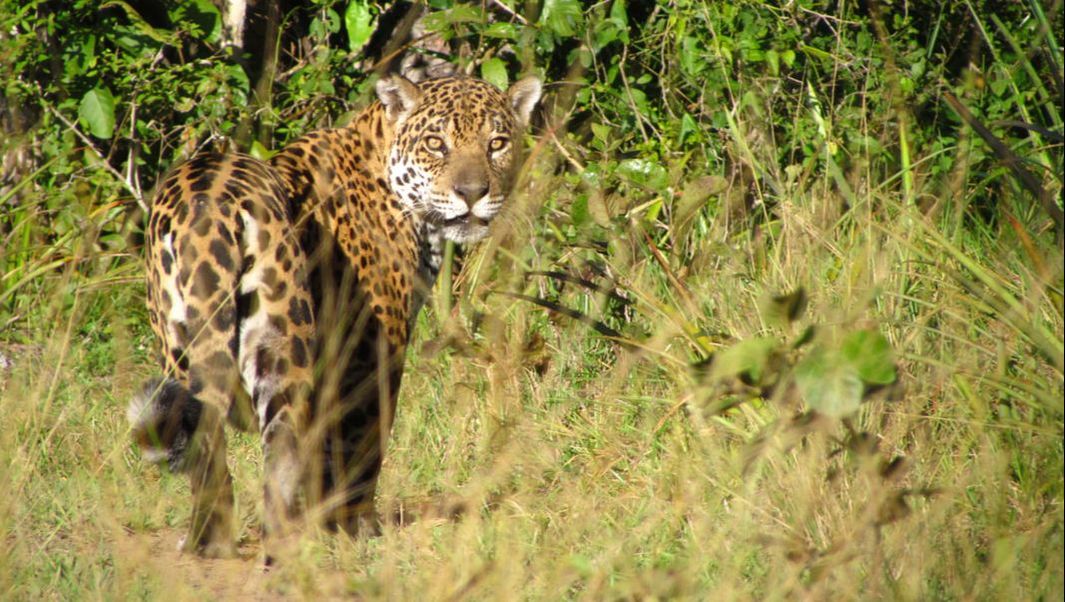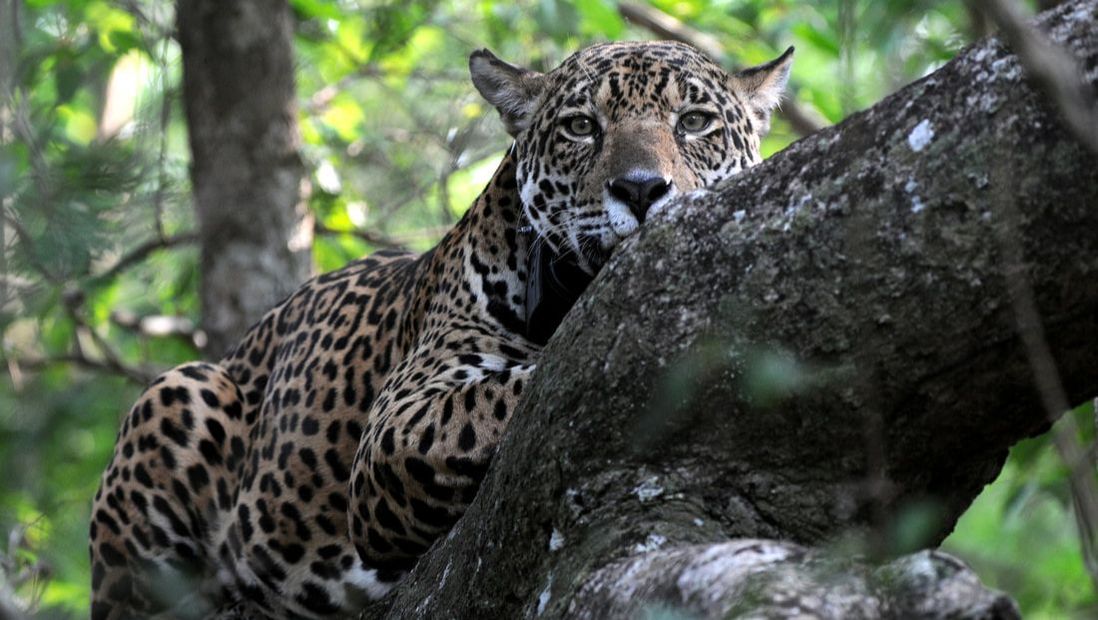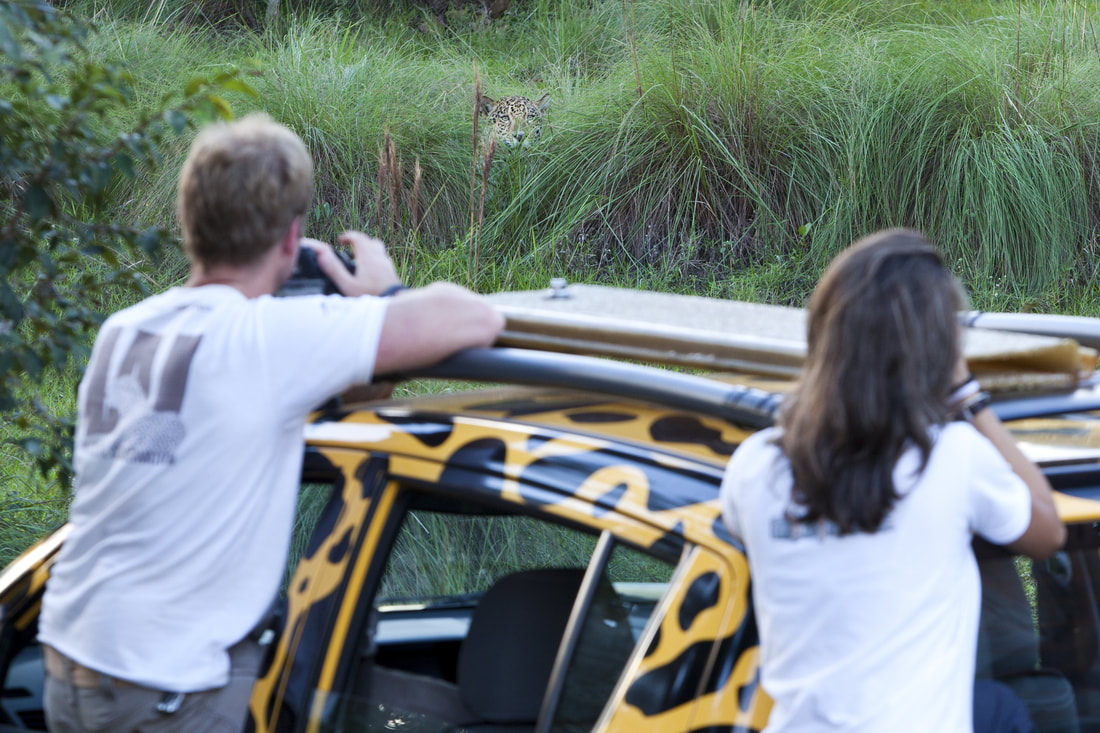|
We reached out to our festival filmmakers to ask them questions about the experience of making their films.
What inspired this story?
I have seen and filmed jaguars in Brazil on previous projects and was in awe of them. But was searching for a story that encapsulated the real-world threats and challenges the cats face, not just a situation to showcase their amazing behaviour. Contacts in Brazil told me of the pioneering approach to habituate and study wild jaguars that was being used in Southern Pantanal by the Oncafari Project. The work is based on models that have proved successful in habituating big cats to vehicles in Africa, and the team were using the same techniques and expertise to get wild jaguars accustomed to vehicles in Caiman Ecological Refuge. I visited the project to investigate it further and was there when the team learnt about the plight of the two orphans jaguars. A female jaguar had entered the town of Corumba with her two cubs during the flood season and sadly died during an attempt to move her. The local authorities managed to capture the two cubs that were then held in a rescue facility. They looked destined to a life in captivity. But the Brazilian Department of the Environment – ICMBio - approached the Oncafari project to see if they would attempt to re-wild and release the cubs in the Southern Pantanal region. It gave us a brilliant opportunity to tell two parallel and juxtaposing story lines – on one hand a pioneering approach to get closer to the wild jaguars for the benefit of science and eco-tourism, and on the other trying to make the orphans wild and wary of humans, and pioneer an approach to releasing captive cats to the wild. Describe some of the challenges faced while making this film. Following individual wild jaguars – even those that are becoming habituated to vehicles – proved challenging and very time consuming. The star wild cat we followed was a female called Esperanca, who had cubs during our filming period. We knew that she was pregnant on the first filming trip but despite the team's best efforts we only caught sight of her new cubs four months later. She proved to be a very diligent mother and it was clear she was completely in control of the interactions we had with her. She only revealed the cubs strictly on her terms when the time was right for them. The orphaned cubs in the purpose built enclosure also proved tricky to film as they became more elusive as they grew more wary of humans. To film them hunting we installed remote cameras during the construction of the enclosure. The camera system sat dormant for eight months and had to endure a Pantanal wet season. But it survived and provided us with a clear view of how the orphans were learning to hunt and that they were ready to be released. What impact do you hope this film will have? Beyond the need for conservation of jaguars in particular, I hope this film will make people think about the pressures and future faced by Brazil's wildlife and wild places at this very critical time in the country's history. Jaguars are Brazil's conservation icon and a symbol of its wildest places. They hold the top slot in a country that is the most bio-diverse on the planet. The survival of Brazil's jaguars has to been seen in relation to the demands of Brazil's growing urban population and the very real threats to its protected areas. Industries such as cattle farming, agriculture and tourism are stake holders, not just in the future of jaguars but in so much of the country's wildlife, and the conservation effort needs to engage on all fronts if we are to safe guard the future of Brazil's wildlife. Were there any surprising or meaningful experiences you want to share? The story of the orphans took on a great poignancy for a number of us on the production during the filming. The jaguars' story is all about mothers – Esperanca, the wild female we followed, was a remarkable mother and we saw how well she taught her two cubs. It showed how reliant jaguar cubs are on the mother to learn to hunt and survive, and made the loss suffered by the two orphans at such a young age even more apparent and stark. But we also felt their loss on a much deeper level. During filming not only did Lilian, our key Oncafari contributor, lose her mother, but I lost my mother to cancer as did our production coordinator, Emily. It was very brave of Lili to talk about her loss during interviews as her loss was very recent and raw – and while she was talking about her loss she was speaking for us all. Anything else you would like people to know? Since we finished filming the two orphaned sisters have continued to adapt well to their new life in the wild. They have been monitored by the Oncafari team and have remained in the area where they were released – which is a well protected and safe territory free from persecution. On the basis of this success and the lessons learnt there are future plans to develop similar release programs in other biomes in Brazil.
0 Comments
Leave a Reply. |
Archives
March 2024
Categories
All
|
Contact UsJackson Wild
240 S. Glenwood, Suite 102 PO Box 3940 Jackson, WY 83001 307-200-3286 info@jacksonwild.org |




 RSS Feed
RSS Feed